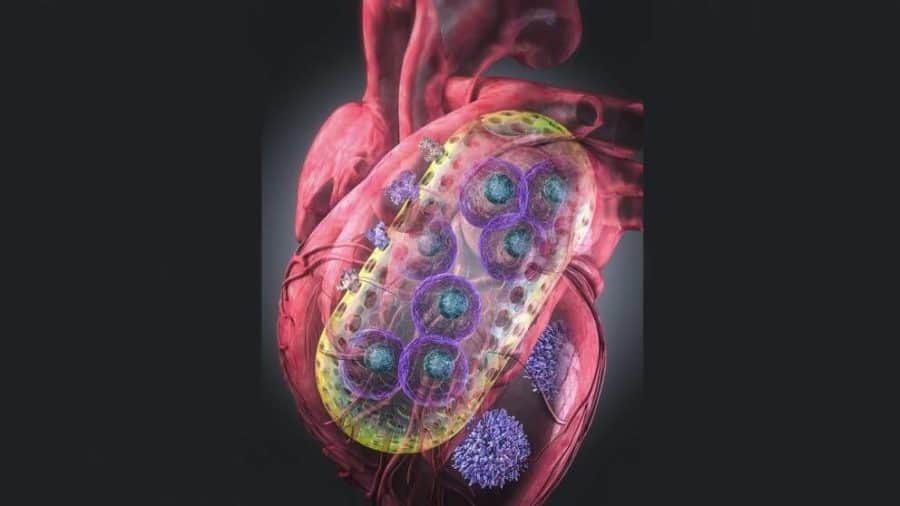Cardiac stem cell therapy is a promising treatment for damaged hearts. However, researchers are still working on two major issues with the therapy – how to keep the stem cells in place and how to prevent rejection when the stem cells are not from the patient’s own body. A new approach from NC State researcher Ke Cheng and a team of international collaborators may solve both of these problems.
The heart is a powerful muscle. That’s great if you’re running a marathon, but if you’re trying to inject stem cells into the heart with the hopes that they’ll stay put, it’s a problem. One of the major drawbacks of cardiac stem cell therapy is simply that the cells do not stick to the injured heart tissue.
Enter a thermosensitive nanogel that is liquid at room temperature but becomes a thick, sticky gel as it warms. Cheng, associate professor of molecular biomedical sciences at NC State’s College of Veterinary Medicine and associate professor in the NC State/UNC Joint Department of Biomedical Engineering, partnered with chemical engineers from the University of Adelaide and cardiac specialists from the University of Zhengzhou and UNC-Chapel Hill to test the nanogel as a delivery mechanism for cardiac stem cells.
The nanogel, poly(N-isopropylacrylamine-co-acrylic acid), or P(NIPAM-AA) for short, had another property that made it appealing for use: in its thickened state it had porous openings large enough for a stem cell’s healing factors to escape, but not large enough for immune cells to enter. And it could be adjusted to slowly degrade over time, giving stem cells enough time to repair a damaged heart before dissolving away.
“Autologous stem cells – grown from a patient’s own cells – are ideal to use in therapies, but that isn’t always practical,” Cheng says. “For one thing, growing the cells takes time, which a patient may not have. For another, the heart cells themselves may be affected by disease, so stem cells taken from that source would not be useful.
“That’s why we’re working on allogeneic stem cell therapies, but whenever you introduce cells from an outside source into the body, the immune system will attack them. The nanogel delivery method keeps the cells in place, protects them from the body’s immune response, and allows the regenerative factors released by the stem cells to reach the heart.”
Cheng and his collaborators tested the nanogel delivery system in mice and pigs with hearts damaged by a heart attack. Without the nanogel, only about one percent of injected stem cells stayed in the heart. With the gel, up to 15 percent of the stem cells stayed put. They also found that in both animal models heart function improved three to four weeks after treatment. Mice showed a greater improvement than pigs, but in both models heart function was maintained and did not decrease.
“We are pleased with these results,” Cheng says. “The nanogel is a safe, cost-effective way to deliver the cells directly to the affected area, and the large animal (pig) data is promising, which may lead to a human clinical trial in the future.”
Cheng’s work appears in the journal ACS Nano, and was supported by the NIH and by NC State’s Chancellor’s Faculty Excellence Program and Chancellor’s Innovation Fund.


